Hypothesis Testing and Statistical Analysis: Statistics Homework
VerifiedAdded on 2022/07/29
|8
|665
|24
Homework Assignment
AI Summary
This document presents solutions to a statistics homework assignment focusing on hypothesis testing. The assignment includes four problems. The first problem involves a one-sample Z-test for proportions, examining whether more than 50% of students received grades better than B-. The second problem utilizes a Z-test to determine if the average number of coffee cups consumed by students aligns with a specific claim. The third problem uses a t-test to compare the performance of students who stayed awake all night versus those who slept. The fourth problem employs a t-test to assess the impact of a drug on performance. Each solution includes the null and alternative hypotheses, critical values, decision rules, calculations of test statistics, p-values, and conclusions based on the significance levels provided. The solutions demonstrate the application of statistical methods to analyze sample data and draw inferences about population parameters.
1 out of 8

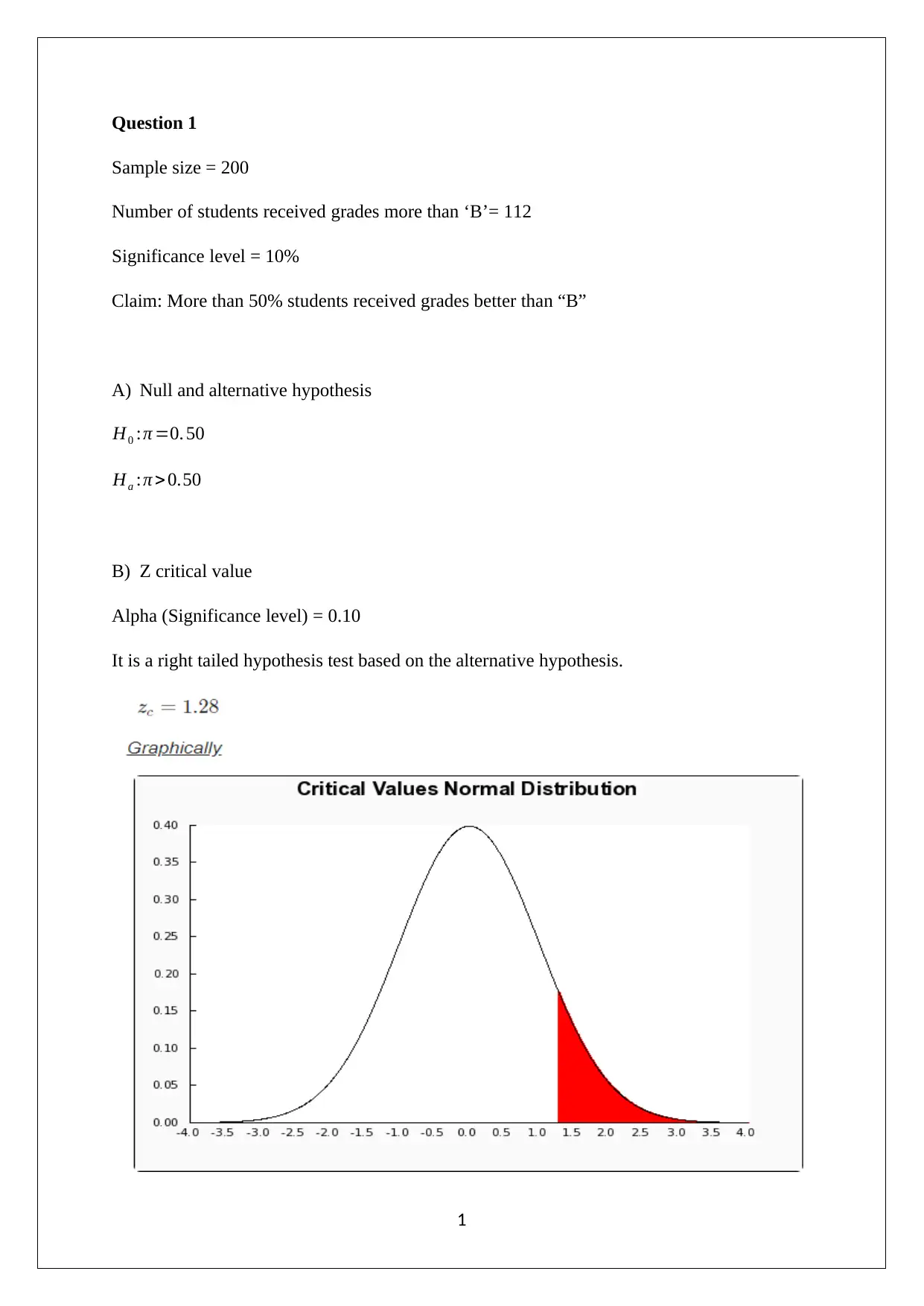
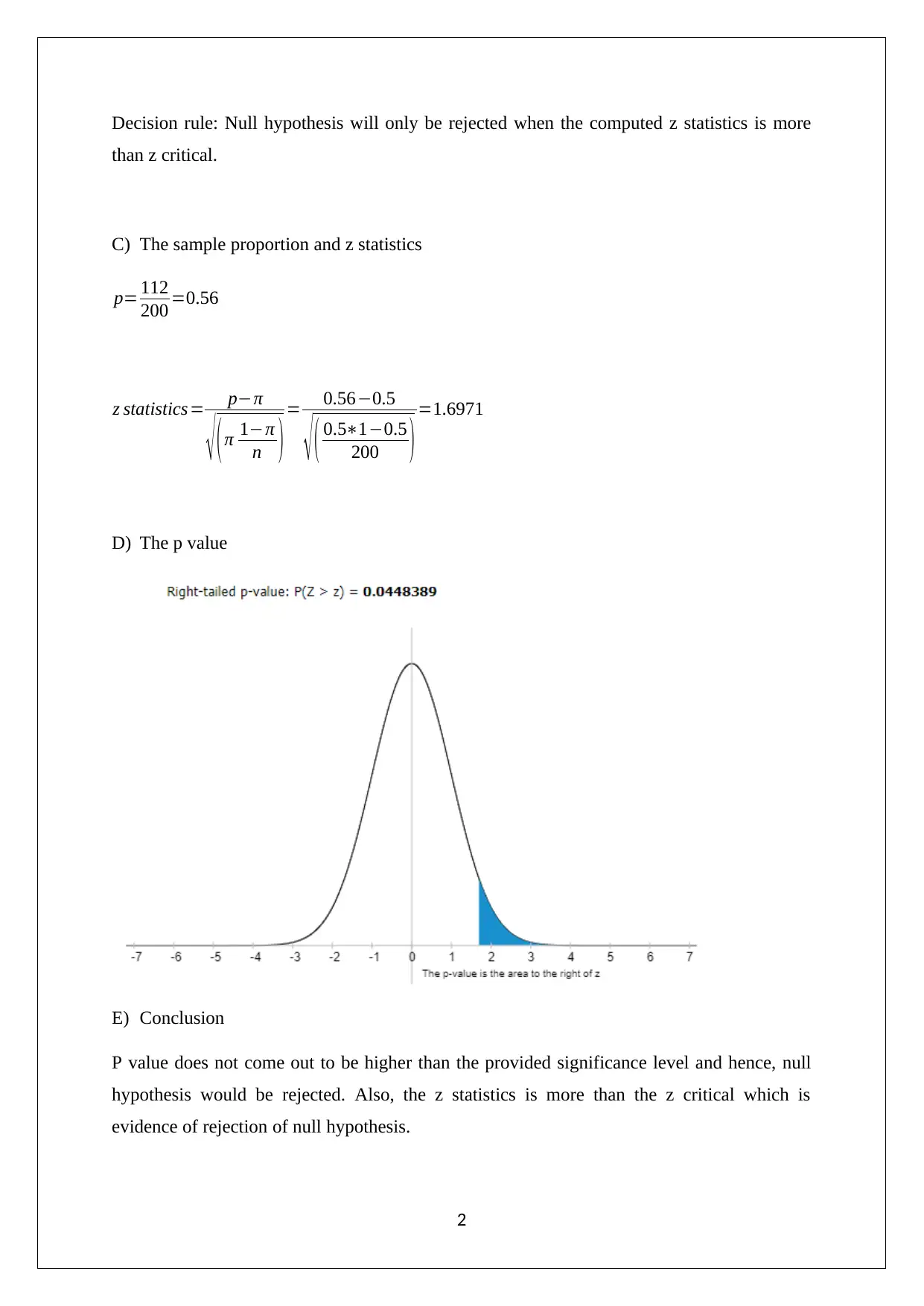

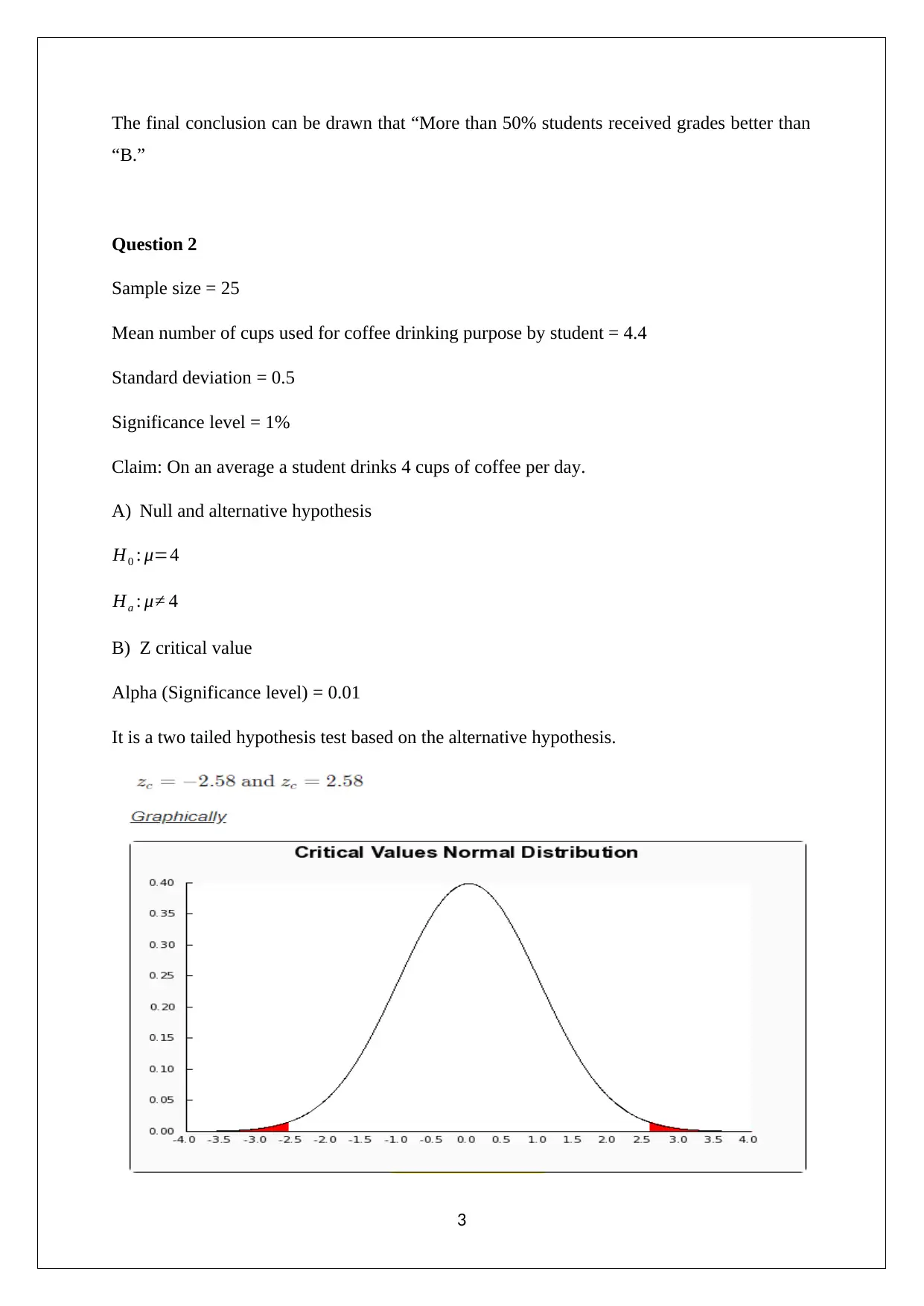
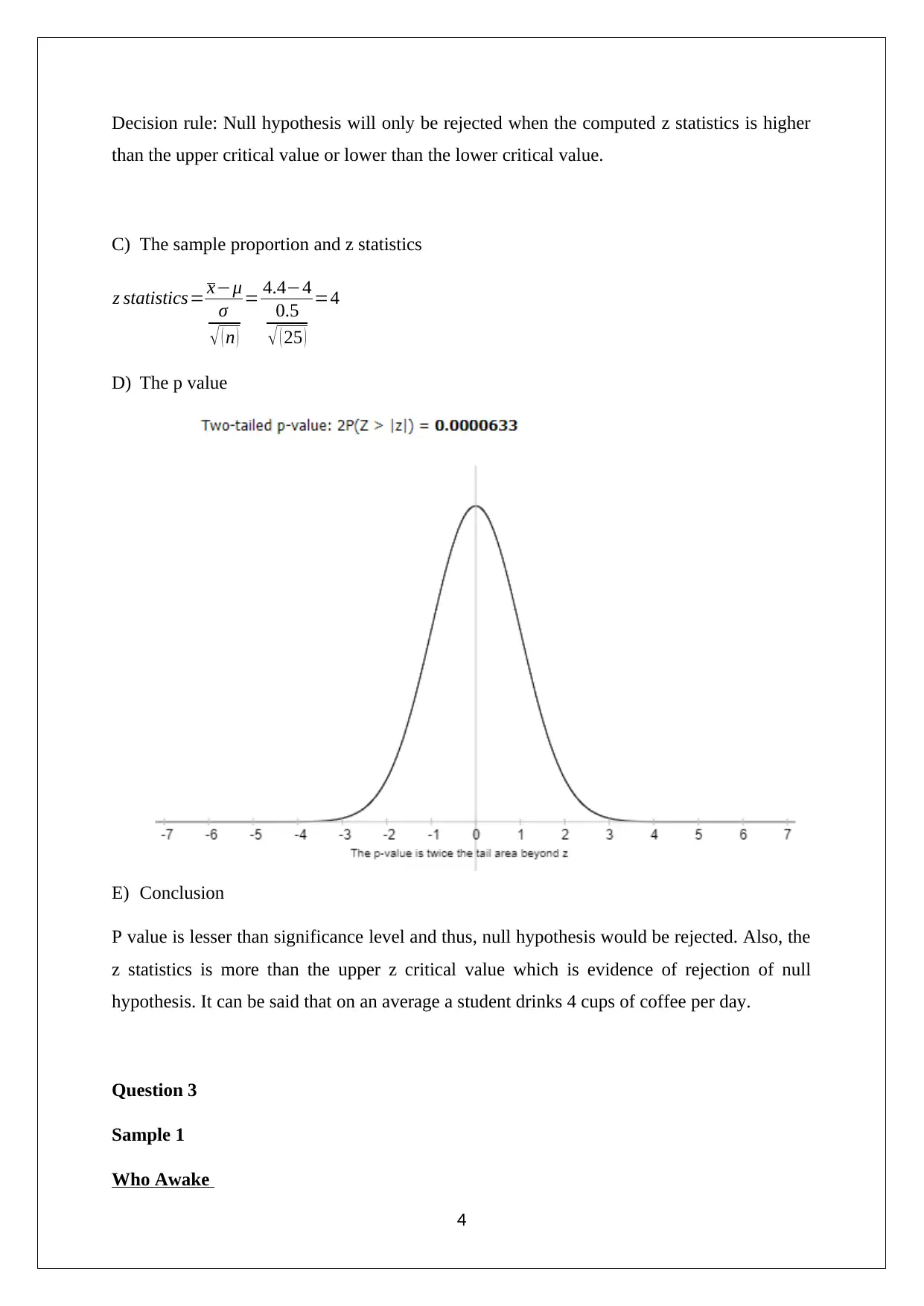
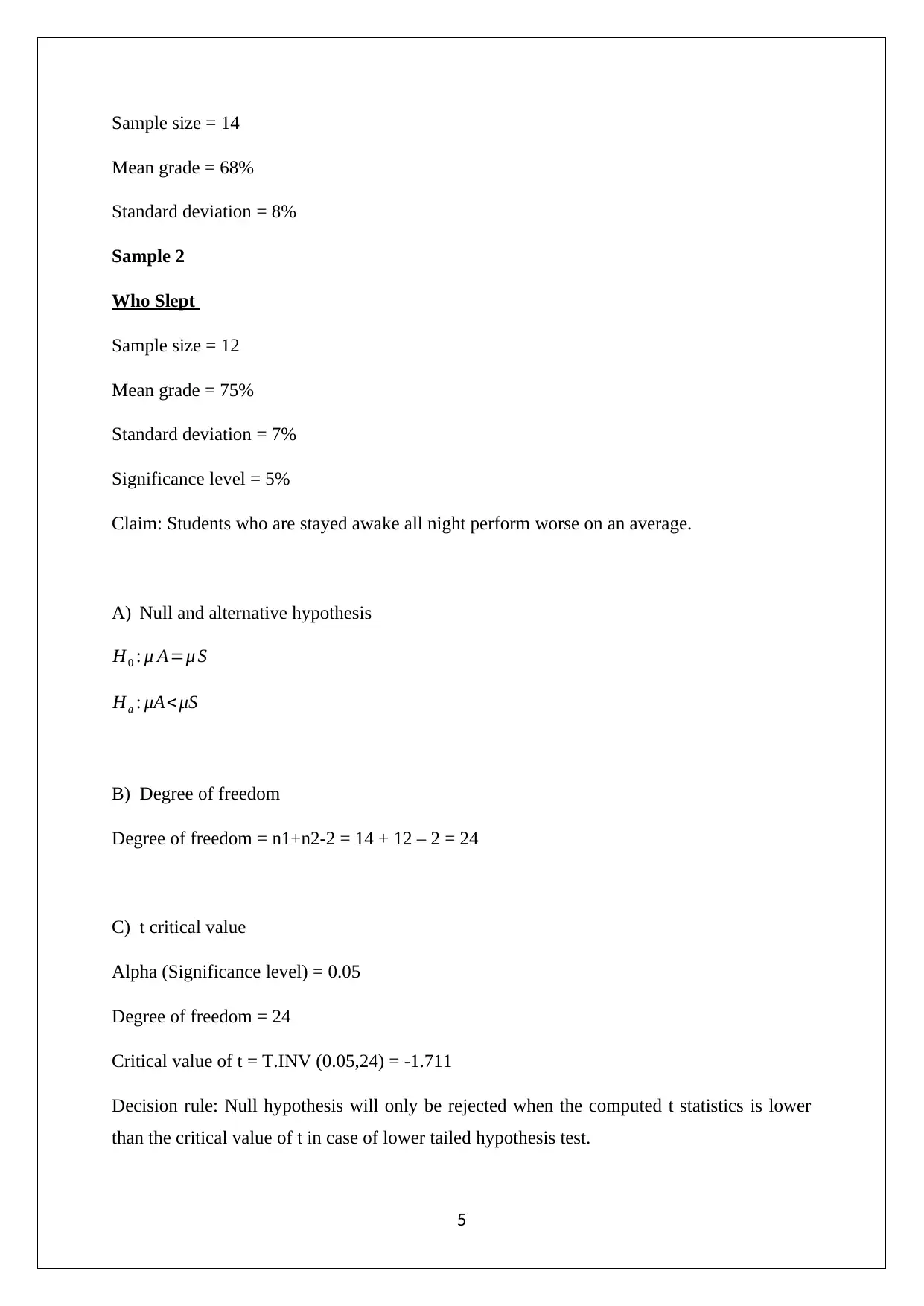
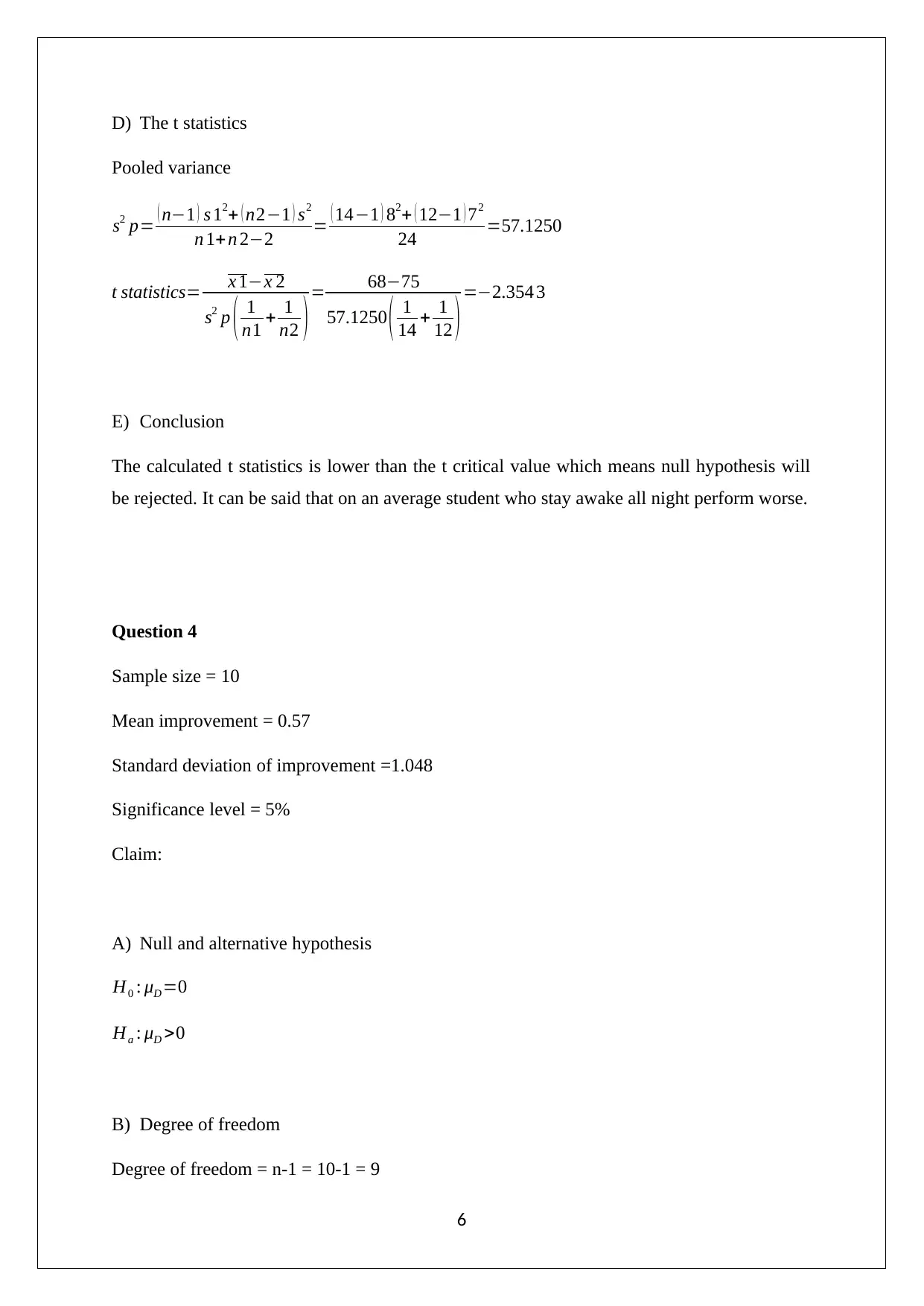
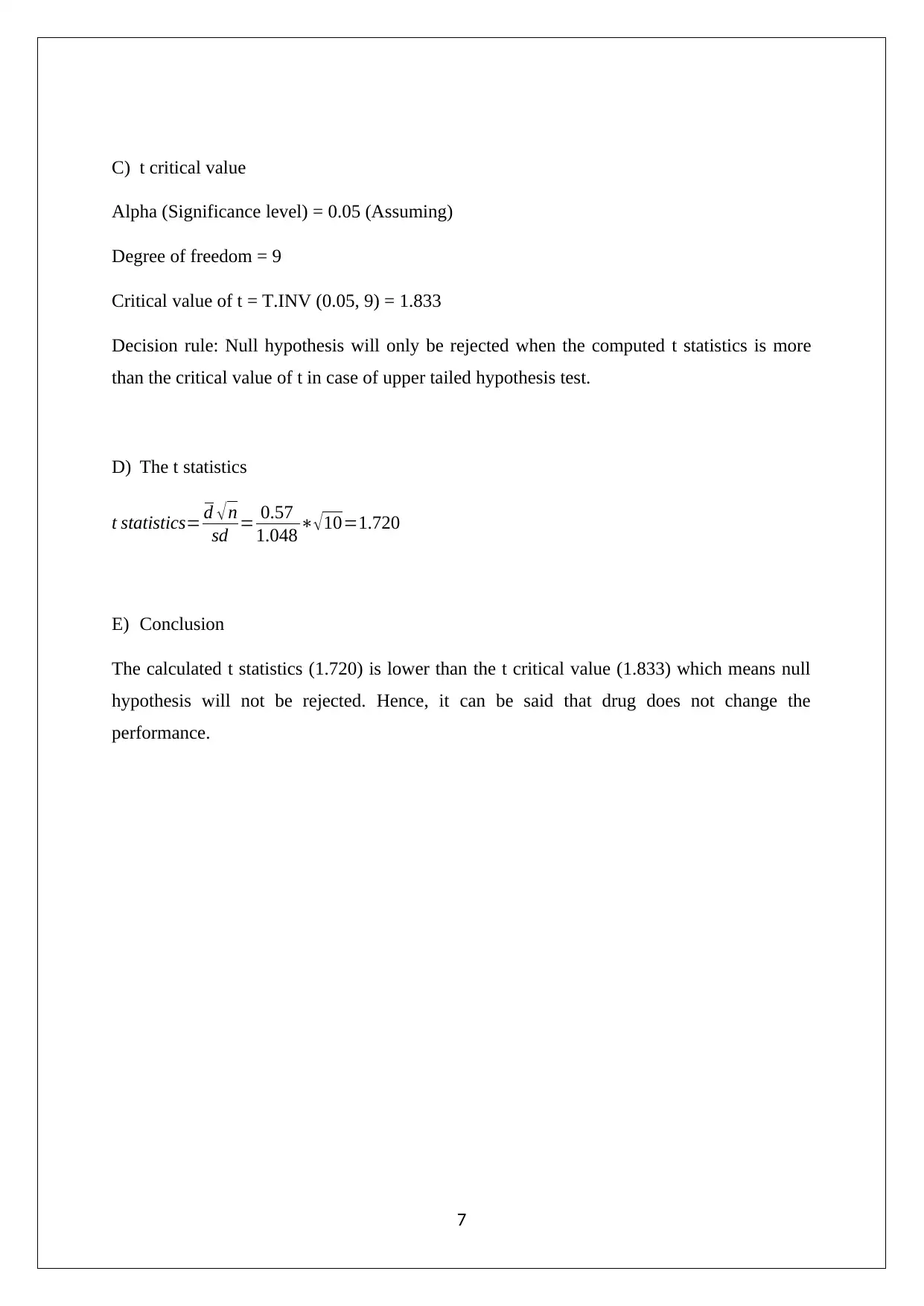





![[object Object]](/_next/static/media/star-bottom.7253800d.svg)